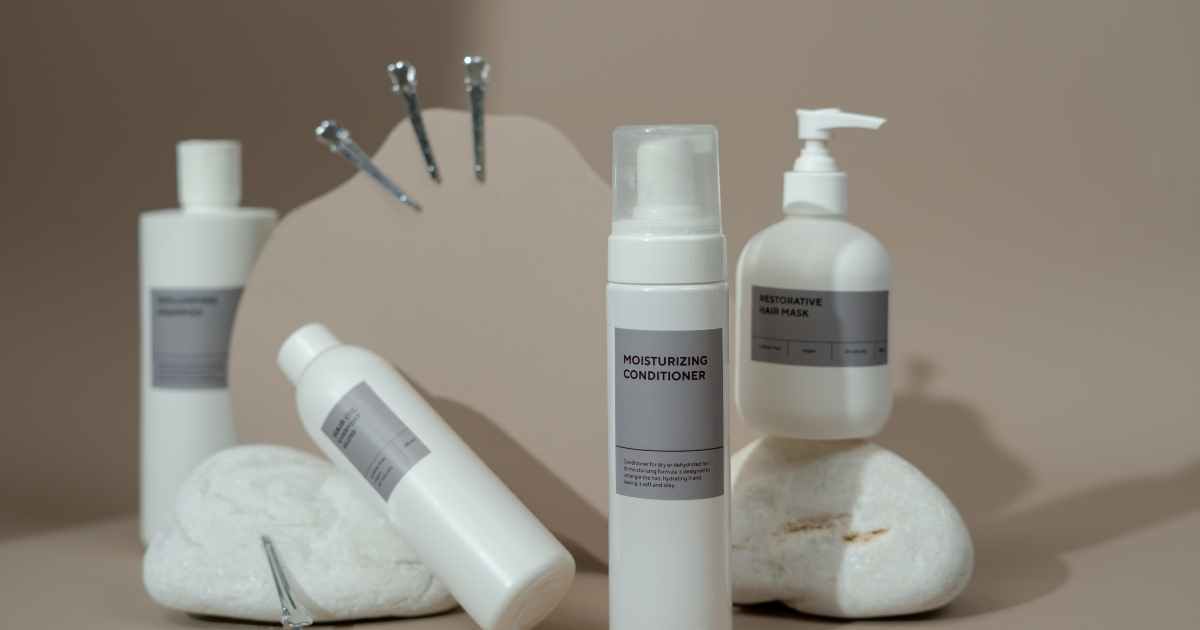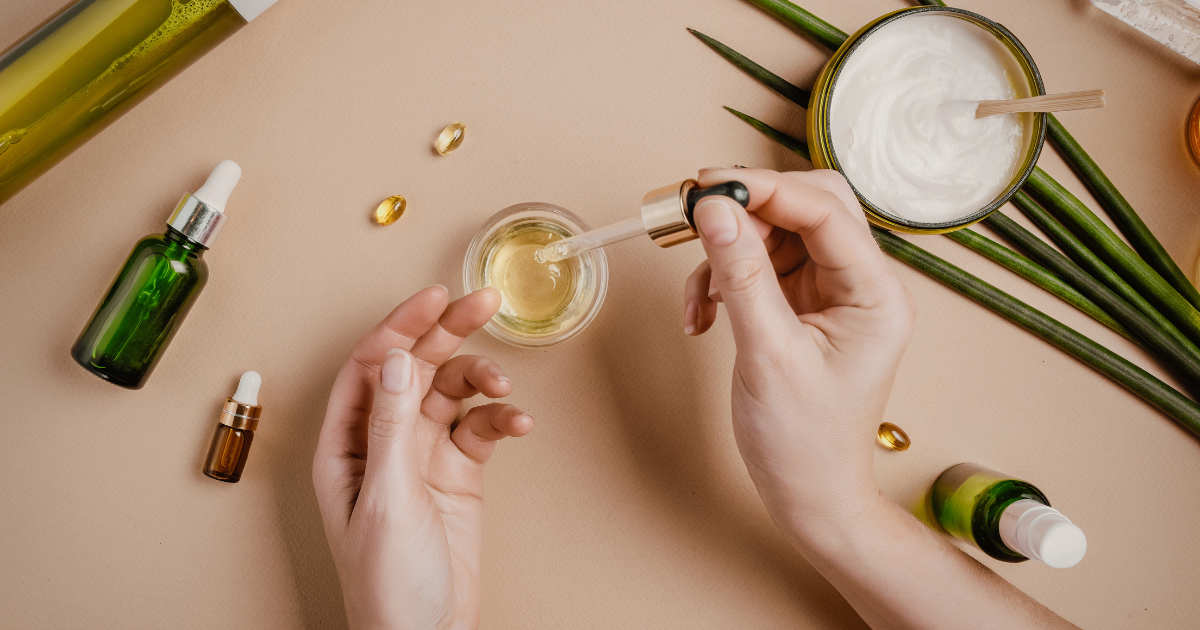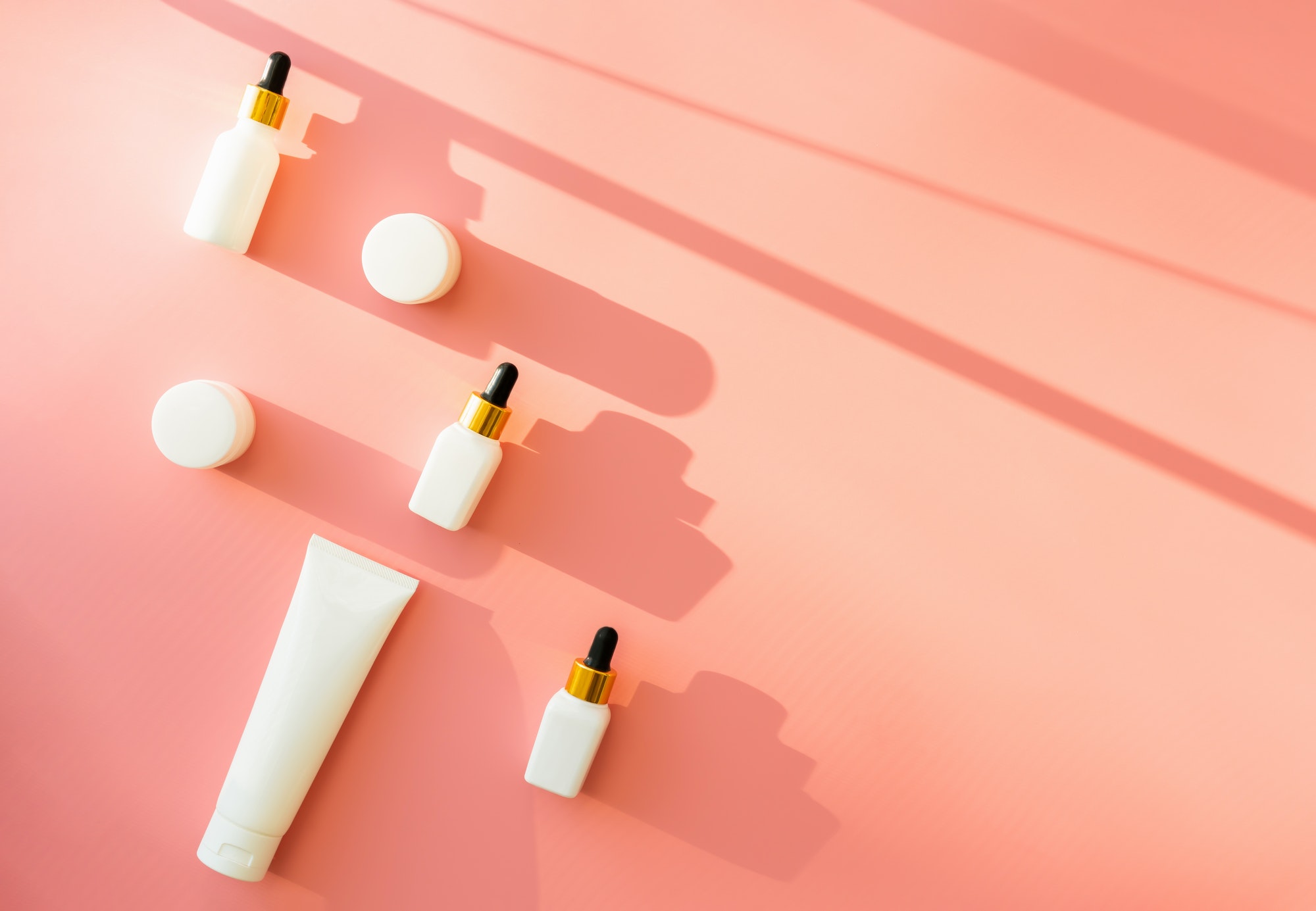Introduction
In recent years, the beauty industry has undergone a profound and transformative paradigm shift, characterised by the emergence and ascendancy of the “clean beauty” movement. The contemporary consumer landscape exhibits a growing inclination towards cosmetics and skincare merchandise that is perceived to possess enhanced safety attributes, environmental compatibility, and a lack of potentially deleterious constituents. This trend has precipitated an escalating consumer desire for merchandise denoted as “clean,” “natural,” or “organic.” The present era of clean beauty necessitates meticulous consideration of the marketing and labelling strategies employed by cosmetic companies, as these practises bear substantial legal ramifications. To adhere to regulatory requirements and uphold the confidence of consumers, companies must exercise caution and prudence in their navigation of this complex landscape.[1]
The beauty industry is currently experiencing the pervasive influence of sustainability, which encompasses both environmental and social dimensions. In contemporary times, a notable proportion of the consumer population, precisely 76 percent, exhibits a strong inclination towards the procurement of sustainable cosmetics. It is worth highlighting that within this demographic, the younger cohorts, namely Millennials and Gen-Z shoppers, demonstrate an even greater propensity, with 80 percent and 86 percent respectively, to engage in such sustainable consumption practises. According to recent findings, a substantial majority of individuals across the globe, specifically 64 percent, have expressed a willingness to allocate additional financial resources towards the procurement of sustainable products. The growth rate of products accompanied by sustainable claims outpaced that of products lacking such claims by a factor of 7.1. The global pandemic has precipitated a notable shift in the priorities of cosmetic companies, with sustainability emerging as a paramount concern.[2]
The contemporary market landscape has witnessed a discernible surge in consumer demand for products that exhibit enhanced cleanliness attributes. The proponents of this initiative are actively engaged in a campaign aimed at the eradication of chemical compounds from cosmetic formulations, while simultaneously providing endorsement and assistance to enterprises that prioritise environmental sustainability. Furthermore, it is anticipated that the market for pure beauty products will attain a valuation of $22 billion by the year 2024. Therefore, it is imperative for brands that lack the clean label designation to confront a pivotal choice to maintain their relevance in the market.[3]
Regulatory Framework
The regulatory landscape pertaining to cosmetics and skincare products exhibits considerable heterogeneity across nations, albeit with discernible underlying principles that tend to be shared. In the context of the United States, it is noteworthy to mention that the Food, Drug, and Cosmetic Act (FD&C Act)[4] confers upon the Food and Drug Administration (FDA) the jurisdiction to oversee and regulate the domain of cosmetics. Although lacking pre-market approval authority for cosmetics, the Food and Drug Administration (FDA) does impose the requirement that these products must ensure consumer safety when used as intended and exhibit appropriate labelling.
Marketing and Labelling Challenges
Within the framework of the clean beauty movement, there has been a noticeable surge in the utilisation of lexicons such as “clean,” “natural,” and “organic” in the promotional and labelling strategies employed by cosmetic product manufacturers. The utilisation of these terminologies is designed to effectively communicate a perception of security, untaintedness, and ecological conscientiousness to the target consumer base. One of the primary quandaries encountered within this movement pertains to the conspicuous lack of universally established and standardised definitions for the terminologies. The presence of ambiguity in product claims can engender a multitude of legal quandaries and apprehensions, particularly in instances where corporations engage in misrepresentation or exaggeration, thereby potentially deceiving consumers.
In contrast to terminologies such as “organic” within the realm of the food industry, which frequently possess well-defined regulatory parameters and certification protocols, the beauty industry lacks uniform, government-established criteria for designations such as “clean” or “natural.” The lack of explicit directives in this regard affords corporations considerable latitude in their utilisation and interpretation of said terminologies.[5]
There exists a growing consumer inclination towards acquiring knowledge pertaining to the constituent elements present within cosmetic products that are applied onto skin and bodies. The burgeoning consciousness regarding the matter is propelled by a multitude of factors, encompassing apprehensions pertaining to allergenic substances, dermal sensitivities, well-being, and ecological ramifications. Consequently, companies are confronted with escalating demands to furnish precise and all-encompassing revelations pertaining to their constituent elements. The present undertaking may prove intricate, particularly in instances where proprietary compositions are involved.[6]
Consumers actively pursue an urge in transparency when it comes to product labelling, with the primary objective of making well-informed decisions that align with their individual requirements, inclinations, and possible sensitivities. The meticulous disclosure of ingredients stands as a pivotal facet of ensuring transparency within this context. Regulatory mandates pertaining to the disclosure of ingredient lists for cosmetic products have been instituted by regulatory agencies across numerous countries. Such a stipulation serves a dual purpose: firstly, to safeguard the well-being of consumers, and secondly, to establish a system of responsibility whereby companies are held liable for the safety and constituents of their merchandise. The intricate nature of cosmetic formulations is characterised by their propensity for incorporating a diverse amalgamation of both naturally derived and synthetically produced constituents. In numerous instances, companies employ exclusive amalgamations and undisclosed techniques to cultivate unparalleled and efficacious merchandise. The comprehensive elucidation of these formulations poses a formidable challenge, as it necessitates the balancing of the imperative to disclose pertinent information with the need to safeguard sensitive intellectual property.[7]
The International Nomenclature of Cosmetic Ingredients (INCI) is a meticulously devised framework that bestows uniform designations upon cosmetic constituents. The present system exhibits efficacy in promoting uniformity and lucidity within ingredient lists. However, it remains a formidable task for consumers to decipher said lists, particularly when confronted with intricate or unfamiliar nomenclature. The issue of allergens and sensitivities is of paramount importance to consumers who possess specific allergies or sensitivities, as they heavily depend on comprehensive ingredient lists in order to circumvent potential allergens or irritants. The importance of precise disclosure cannot be overstated, as it serves as a pivotal measure in mitigating unfavourable responses and potential legal ramifications for corporate entities.[8]
To efficaciously address the aforementioned challenges and sufficiently cater to the discerning demands of consumers seeking transparency, it is imperative for cosmetic companies to embrace and implement a plethora of strategic approaches. One effective strategy is highlighting clinically backed solutions like happy head hair growth products, which combine science and customization to meet individual needs.
Legal battles
According to Ronie Schmelz, a partner at K&L Gates, LLP in Los Angeles, it is advisable to refrain from using the term “clean” in cosmetic product labelling and advertising unless a company can establish a precise definition and maintain consistency in its usage throughout marketing materials. He takes the example of garment manufacturing wherein it is imperative that one clearly articulates and specifies the intended meaning behind their designs while in the process of creating garments. This also includes that even if the composition consists of a reduced number of elements, such information is expressed. As per him, if one chooses to abstain from incorporating ingredients listed as unacceptable by the Environmental Working Group, it is within their prerogative to express such a stance. It is imperative that articulation of the intended message is done with utmost clarity as using marketing terms in a manner that exposes vulnerability to consumer lawyers can potentially incur substantial expenses.[9] According to Angela Diesch, a partner at Amin Talati Wasserman, LLP in Los Angeles, Sephora USA possesses a formidable ability to safeguard its ‘Clean at Sephora’ designation for specific products due to its commitment to transparency regarding the implications of this claim. Furthermore, Diesch suggests that the plaintiff involved in the recent case may encounter challenges in substantiating the assertion that a rational consumer would be deceived by such labelling.[10]
In the year 2016, the Federal Trade Commission (FTC) initiated legal proceedings against four corporate entities on the grounds of their deceptive and fallacious marketing practises, specifically pertaining to the misrepresentation of their products as being “all natural” or “100% natural.” However, it is worth noting that the FTC refrained from fully endorsing the proposition that consumers interpret unqualified “natural” assertions as tantamount to absolute natural claims.[11]
The dismissal of a class action complaint pertaining to the “Nature Fusion” claim on Pantene Pro-V products by Procter & Gamble Co. in California’s Northern District has recently been achieved. The plaintiff, acting in the capacity of a consumer, has put forth an allegation regarding the Nature Fusion labelling. According to the plaintiff, the labelling of these products is misleading as it falsely represents them as being entirely natural or primarily composed of natural ingredients. The plaintiff asserts that such claims are not substantiated by the actual composition of the products in question.[12]
The decision rendered by the federal court in California favoured P&G, and subsequent to an appeal, the Ninth Circuit upheld this ruling. The Ninth Circuit, in its determination, concluded that the claim made by Pantene Pro-V regarding its “Nature Fusion” product was not deceitful, but rather exhibited ambiguity. Moreover, the court found that the information provided on the back label of the product adequately clarified the aforementioned claim. However, Schmelz contends that in the event that clean claims align with the trajectory of the natural movement, it is plausible that even comprehensive disclosures regarding ingredient composition and meticulously crafted definitions may not suffice in providing adequate protection against costly legal settlements.[13]
According to McKee, it is imperative for companies aspiring to establish themselves as pioneers of ‘clean’ to diligently deliberate upon the formulation of a comprehensive definition. Furthermore, it is essential for these companies to effectively communicate and convey this definition to consumers in a manner that is both logical and unified. To attain this, corporations must exercise constant vigilance in order to ensure seamless coordination and harmonious alignment across all organisational facets. In accordance with Schmelz’s recommendations, it is imperative for companies to maintain comprehensive documentation that substantiates their assertions, ensuring the absence of any ambiguities or discrepancies. Under the newly implemented provisions of the Modernization of Cosmetics Regulation Act, 2022, it is imperative that manufacturers possess readily available substantiation data pertaining to the safety of their products.[14]
To optimise consumer understanding and streamline the identification of constituents and potential allergens, it is recommended to employ a synergistic approach encompassing lucid and easily comprehensible terminology in conjunction with the International Nomenclature of Cosmetic Ingredients (INCI) designations. Through the implementation of this particular methodology, the dissemination of intricate scientific knowledge can be aptly communicated to individuals, thereby fostering a climate of openness, and facilitating well-informed choices within the domain of personal care merchandise.[15]
The potential for individuals to make informed decisions based on their distinct skin type, specific needs, and personal values can be significantly enhanced through a wise allocation of resources towards consumer education. The elucidation of constituents in cosmetic formulations represents a multidimensional endeavour, demanding a thorough comprehension of the complexities entailed. The practise, nevertheless, assumes a position of utmost significance in the establishment of a solid groundwork of trust with astute consumers and the guarantee of compliance with relevant regulatory frameworks. Within the highly competitive landscape of the beauty industry, enterprises that exhibit an unwavering dedication to the principles of transparency, unambiguous product labelling, and comprehensive consumer education possess the inherent capacity to not only satisfy the market requirements but also forge a unique and discernible niche for themselves.[16]
Conclusion
In an era characterised by the indispensability of trust within various industries, the deleterious effects of deceptive marketing practises and misleading product labelling on consumer confidence cannot be overstated. The potential repercussions of consumers perceiving deception in product claims are twofold: financial and reputational. In such instances, consumers may opt to disengage entirely from the brand in question. This disengagement can result in substantial negative impacts on both the financial standing and the reputation of the brand.
In response to the challenges as mentioned above, an increasingly prevalent demand has emerged within the cosmetics industry for enhanced transparency and regulatory measures. There exists a growing impetus among industry stakeholders and advocacy groups to advocate for the establishment of universally standardised definitions pertaining to key terminologies such as “clean,” “natural,” and “organic.” The increasing scrutiny of these assertions by regulatory bodies in diverse nations underscores the imperative for companies to harmonise their marketing strategies with well-established benchmarks. In summary, the dearth of universally accepted delineations pertaining to popular terminologies such as “clean” within the realm of the clean beauty movement poses a substantial obstacle for the sector. In the realm of cosmetics and skincare products, it is imperative for companies to exercise caution to circumvent legal repercussions, uphold consumer confidence, and adjust to prospective regulatory frameworks that may delineate and oversee the utilisation of the discussed terminologies.
Other References
Dina ElBoghdady, ‘Clean’ beauty has taken over the cosmetics industry, but that’s about all anyone agrees on, The Washington Post (March 11, 2020), https://www.washingtonpost.com/lifestyle/wellness/clean-beauty-has-taken-over-the-cosmetics-industry-but-thats-about-all-anyone-agrees-on/2020/03/09/2ecfe10e-59b3-11ea-ab68-101ecfec2532_story.html Ayush Tainwala, ‘A conscious shift towards clean cosmetics’, Fashion Retailer, IndianRetailer.com, https://www.indianretailer.com/article/retail-people/sustainability/a-conscious-shift-towards-clean-cosmetics.a8035 accessed on 1 September 2023.
Paige Stables, Coming Clean: A Clean Beauty Revolution, Allure (Feb. 16, 2021), https://www.allure.com/story/history-of-clean-beauty Ayush Tainwala, ‘A conscious shift towards clean cosmetics’, Fashion Retailer, IndianRetailer.com, https://www.indianretailer.com/article/retail-people/sustainability/a-conscious-shift-towards-clean-cosmetics.a8035 accessed on 1 September 2023.
U.S. Food and Drug Administration (FDA), FDA authority over cosmetics: How cosmetics are not FDA approved, but are FDA regulated. What kinds of products are “cosmetics” under the law?, https://www.fda.gov/Cosmetics/GuidanceRegulation/LawsRegulations/ucm074162.htm#What_kinds. For purposes of this article, the terms “cosmetics” and “personal care products” will be used interchangeably Ayush Tainwala, ‘A conscious shift towards clean cosmetics’, Fashion Retailer, IndianRetailer.com, https://www.indianretailer.com/article/retail-people/sustainability/a-conscious-shift-towards-clean-cosmetics.a8035 accessed on 1 September 2023.
[1] Ayush Tainwala, ‘A conscious shift towards clean cosmetics’, Fashion Retailer, IndianRetailer.com, https://www.indianretailer.com/article/retail-people/sustainability/a-conscious-shift-towards-clean-cosmetics.a8035 accessed on 1 September 2023.
[2] Ibid.
[3] Ibid. at 1.
[4] Food, Drug, and Cosmetic Act (FD&C Act)[4], 1938.
[5] Ibid. at 1.
[6] Ibid. at 1.
[7] Ibid. at 1.
[8] Ibid. at 1.
[9]Schmelz during the BBB National Programme Inc.’s webinar on 18th July, titled “Mastering the Art of Accurate Representation in Beauty Advertising.”
[10] Francis, Eileen, ‘Sephora Well-Positioned to Defend ‘Clean Beauty’ Case, Attorney Says’, HBW Insight, https://hbw.pharmaintelligence.informa.com/RS153370/Sephora-WellPositioned-To-Defend-Clean-Beauty-Case-Attorney-Says, accessed on 1 September 2023.
[11] Nelson, Ryan, ‘FTC Finalizes ‘All-Natural’ Personal-Care Settlements, Offers A Word On ‘Natural’ – HBW Insight, 13 Jul, 2016, https://hbw.pharmaintelligence.informa.com/RS108446/FTC-Finalizes-AllNatural-PersonalCare-Settlements-Offers-A-Word-On-Natural accessed on 1 September 2023.
[12] “US Ninth Circuit Affirms: P&G’s Pantene ‘Nature Fusion’ Claim Passes Reasonable Consumer Test” – HBW Insight, 20 Jun, 2023, https://hbw.pharmaintelligence.informa.com/RS153766/US-Ninth-Circuit-Affirms-PGs-Pantene-Nature-Fusion-Claim-Passes-Reasonable-Consumer-Test accessed on 1 September 2023.
[13] Nelson, Francis, ‘US Ninth Circuit Affirms: P&G’s Pantene ‘Nature Fusion’ Claim Passes Reasonable Consumer Test’ , HBW Insight, 20 Jun, 2023, https://hbw.pharmaintelligence.informa.com/RS153766/US-Ninth-Circuit-Affirms-PGs-Pantene-Nature-Fusion-Claim-Passes-Reasonable-Consumer-Test accessed on 1 September 2023.
[14] Francis, Eileen, ‘FDA Will Be Motivated To Bring Enforcement Action Under MoCRA; ‘Get Your Ducks In a Row’ – HBW Insight, 6 Jun, 2023, https://hbw.pharmaintelligence.informa.com/RS153766/US-Ninth-Circuit-Affirms-PGs-Pantene-Nature-Fusion-Claim-Passes-Reasonable-Consumer-Test accessed on 1 September 2023.
[15] Ibid.
[16] Ibid. at 9.
Author: Mahia Nazeer
















